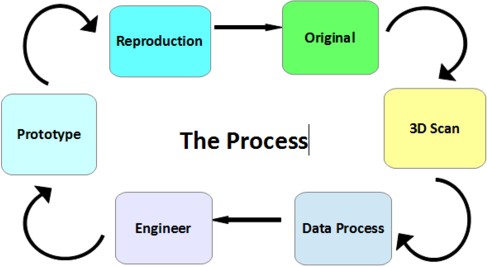Reverse Engineering for Open Source Projects:

Reverse engineering, the process of analyzing a finished product to determine how it functions and how it was made, finds valuable applications in the world of open source projects. Open source projects, by nature, provide the source code for anyone to access and study. However, there are still scenarios where reverse engineering can be particularly beneficial. Let’s explore some of them:

Improved Understanding: Reverse engineering open source projects offers a deeper understanding of the internal workings and implementation details. By examining the codebase, developers can glean insights into the project’s architecture, design patterns, and coding practices. This improved comprehension allows them to make informed decisions about adapting the project to other platforms or incorporating it into their own work.

Extension and Customization: Open source projects provide a solid foundation upon which to build custom solutions and extensions. Reverse engineering enables developers to gain a thorough understanding of the parent project, allowing them to modify its functionalities, add new features, or adapt it to specific use cases. It empowers them to create tailored applications without starting from scratch.
Bug Detection and Improvement: Through reverse engineering, developers can identify potential bugs and inefficiencies in the project’s code. By scrutinizing the execution flow and examining the underlying logic, they can pinpoint specific issues that may not be apparent from simply reading the source code. This thorough analysis contributes to improving the overall stability and performance of the software.
Learning and Educational Purposes: Open source projects serve as valuable learning resources for aspiring programmers and developers. Reverse engineering enables them to explore real-world applications of programming concepts, understand software development methodologies, and witness various design choices employed by experienced engineers. By unraveling the intricacies of functional code, they gain a profound understanding of software development processes and practices.
Quality Control and Security Assessment: Reverse engineering plays a crucial role in maintaining the quality of open source projects. By meticulously examining the codebase, developers can uncover potential security vulnerabilities that might otherwise remain undetected. They can evaluate dependencies, analyze code for malicious intents, and identify areas for improvement to ensure the project’s security and robustness.
Overall, reverse engineering is a powerful technique that can enhance the value of open source projects. By enabling developers to delve deeper into the codebase, it fosters a deeper understanding, facilitates customization and extension, aids in bug detection and improvement, supports learning and educational endeavors, and contributes to quality control and security assessment.## Reverse Engineering for Open Source Projects
Executive Summary
Reverse engineering plays a critical role in the world of open source projects. It empowers developers to analyze software, gain a profound understanding of its inner workings, and derive valuable insights that foster innovation, improve functionality, and ensure security. By deciphering the design principles and algorithms employed in existing software, developers can accelerate their own software development efforts, leveraging the best practices and lessons learned from successful open source projects.
Introduction
In the vibrant landscape of software development, the concept of reverse engineering has emerged as a strategic tool for comprehending, modifying, and advancing software applications. When it comes to open source projects, which are inherently collaborative and transparent by nature, reverse engineering offers a unique opportunity to harness the collective knowledge and wisdom embedded within these projects.
FAQs
Q: What is the primary objective of reverse engineering in open source projects?
A: Reverse engineering allows developers to dissect the intricate structure and functionality of existing software, delving into its algorithms, design patterns, and underlying principles.
Q: What are some of the benefits of reverse engineering open source projects?
A: Reverse engineering open source projects empowers developers to learn from established solutions, identify areas for improvement, and enhance their own software development practices.
Q: Are there any ethical considerations associated with reverse engineering open source projects?
A: While open source projects often encourage the study and modification of their code, it’s crucial to adhere to the licensing terms and respect the intellectual property rights associated with the project.
Key Subtopics in Reverse Engineering for Open Source Projects
Deciphering Design Patterns
Design patterns represent proven solutions to common software development challenges. By examining open source projects, developers can uncover and comprehend these patterns, enriching their own design capabilities.
- Analyze architectural patterns for modularity and scalability
- Study creational patterns for object creation and initialization
- Explore behavioral patterns for communication and coordination
Analyzing Algorithms and Data Structures
Algorithms and data structures form the backbone of software functionality. Reverse engineering open source projects reveals the algorithms employed and the data structures utilized, providing insights into efficient problem-solving and data management techniques.
- Identify sorting and searching algorithms for data manipulation
- Examine data structures like trees, graphs, and hash tables
- Evaluate algorithms for performance optimization and resource efficiency
Comprehending Code Structure and Organization
The organization and structure of code directly influence its maintainability, readability, and extensibility. Reverse engineering open source projects allows developers to study how experienced programmers structure and organize code effectively.
- Analyze code modularization and encapsulation techniques
- Examine object-oriented principles like inheritance and polymorphism
- Evaluate code documentation and commenting practices
Identifying Security Vulnerabilities
Security is a paramount concern in software development. Reverse engineering open source projects enables developers to scrutinize the code for potential vulnerabilities, such as buffer overflows, SQL injections, and cross-site scripting.
- Examine input validation and sanitization mechanisms
- Analyze authorization and access control implementations
- Evaluate encryption and secure communication protocols
Contributing to Open Source Projects
Reverse engineering open source projects not only enhances personal knowledge but also presents an opportunity to contribute back to the community. By understanding the project’s structure and goals, developers can identify areas where they can contribute code or provide support.
- Participate in code reviews and issue tracking
- Submit patches or feature enhancements
- Collaborate with project maintainers and fellow contributors
Conclusion
Reverse engineering open source projects serves as an invaluable asset for software developers, fostering a deeper understanding of software design principles, algorithms, and implementation techniques. By delving into the inner workings of open source software, developers gain insights that accelerate their own development efforts, contribute to the collective knowledge of the software development community, and ultimately enhance the quality and security of software applications.
Relevant Keyword Tags
- Reverse engineering
- Open source
- Software development
- Design patterns
- Algorithms
